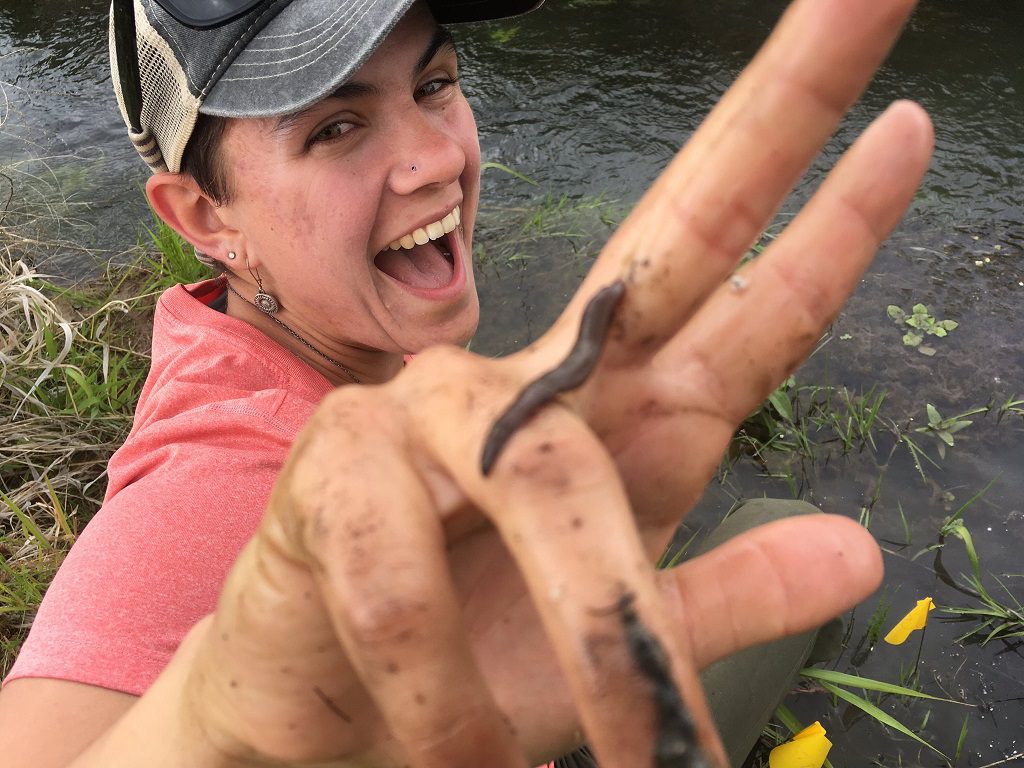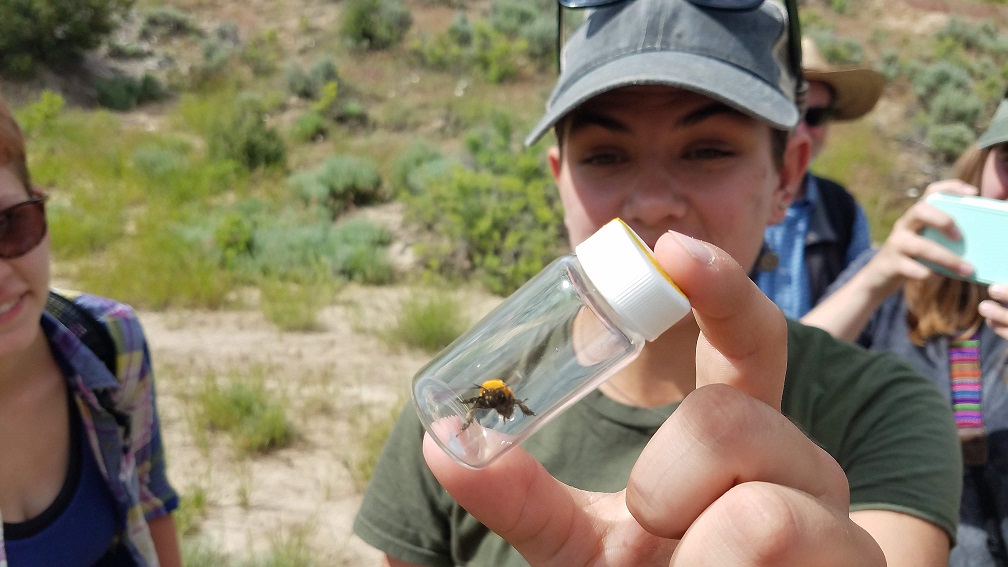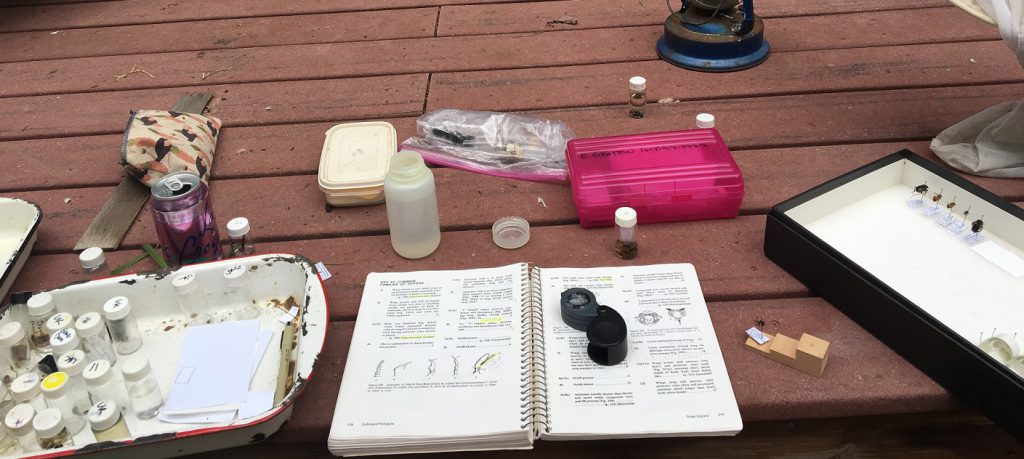By: Elena Gratton
(CNHP Siegele Conservation Science Intern)
My name is Elena Gratton and I am one of this summer’s Siegele interns. I am a Senior studying Conservation Biology and Entomology. Fun Fact: While I’ve done fieldwork in other places, this is my first field season in Colorado! Everything I knew about Colorado flora and fauna came from classes. This summer is exciting because I am learning plants and animals while I’m working with them! At the end of the day I love insects, so a lot of my work focuses on arthropods (insects and related creepy crawlies). This summer I’ve worked on a few projects: The Rifle Ranch restoration, the Hallam Lake Bioblitz, and the borrowing mammal project.

Making friends with invertebrates like this leech at Rifle Ranch. (Photo Credit: Sarah Marshall) 
Bumble bee at Rifle Ranch. (Photo Credit: Renee)
At Rifle ranch we were working on stream restoration, which was interesting. I learned new wetland plants that hadn’t been covered in any classes I’ve taken. We didn’t do any formal insect work, but the last morning the intern group went out and I took an insect net with me. We found several bumblebees as well as butterflies and beetles. The best part was showing the insects to my fellow interns.
Hallam Lake was a bioblitz we conducted with the Aspen Center for Environmental Studies (ACES). A bioblitz is where scientists come in and work with community members to catalog as many living things in a given area in a given amount of time. Our bioblitz area was the Hallam lake nature preserve, we had 3 and a half days, and our community members were the city of Aspen and the patrons of the ACES.
Hallam lake was interesting because there are different habitats that can support a wide variety of insects. In the Roaring Fork River, we found stoneflies, mayflies, and caddisflies. In Hallam Lake itself, we found Diving beetles. There were several small pools and drainages where we found Whirly-gig beetles, water striders, and dragonfly nymphs. On the shore, we found bees, bugs, and butterflies! It took me a while, but I chased down a Pale-Swallowtail that took several tries for me to catch. At one point I literally ran into Hallam Lake chasing a butterfly and nearly fell face first in the lake. The perils of an insect obsession.
After I catch an insect I usually have to kill it. We got a lot of questions from the kids we worked with about why we have to kill insects. I call it the curse of the entomologist, you have to kill what you love. To identify most insects to species you need to get them under a microscope. Living insects are very difficult to get under a microscope. Insects can take a while to identify, so I am still going through the Hallam lake specimens. As of right now, we have 54 families of insects!

Sorting and pinning set up at Hallam Lake. (Photo Credit: Elena Gratton)
As I mentioned before, a lot of insect identification happens under a microscope which means in entomology there is a fair amount of lab work. Lab work for the is how I’ve spent most of this internship! The lab work is for the burrowing mammal project. This project is looking at the differences in soil health and arthropod communities in areas with and without borrowing mammals. I’ve been sorting and identifying ants, beetles, and spiders from pitfall traps from the Central Plains Experimental Range in Pawnee National Grasslands. I have also learned about Isotope sampling, soil enzyme analysis, and litter (grass) decomposition. While I love identifying insects, it’s exciting to look at insects in the larger picture as part of an ecosystem

Pinned Hallam Lake insects. (Photo Credit: Elena Gratton) 
A bug under the scope. (Photo Credit: Elena Gratton)




